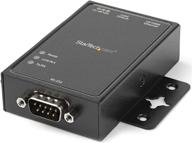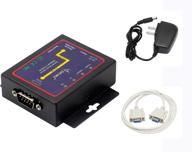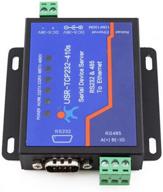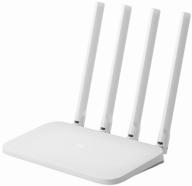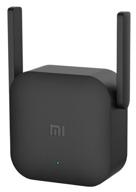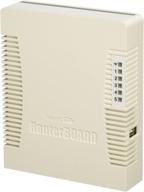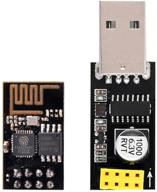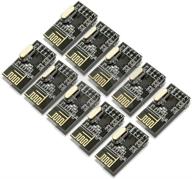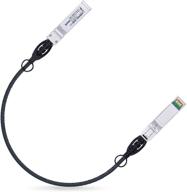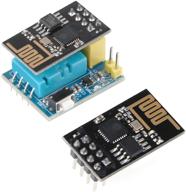Another interesting products
Network Transceivers - Your Guide to Faster, More Reliable Connections
Network transceivers play a crucial role in transmitting and receiving data across networks. Choosing the right transceiver can optimize network performance and reliability. This guide will provide an overview of network transceivers to help you select the best option for your needs.
Introduction to Network Transceivers
A network transceiver is a device that combines a transmitter and receiver in one unit. It converts electrical signals into optical signals and vice versa to send and receive data over fiber optic or copper cabling.
Key Benefits of Network Transceivers
- Faster data transmission rates
- Increased bandwidth capacity
- Enhanced reliability and uptime
- Simplified cabling
- Lower power consumption
Types of Network Transceivers
There are two main categories of transceivers:
Copper Transceivers
Designed for copper cabling like Cat5e. Common types include:
- 10GBASE-T - 10 Gbps over twisted pair copper
- 1000BASE-T - 1 Gbps over copper
- 100BASE-TX - 100 Mbps over copper
Optical Transceivers
Designed for fiber optic cabling. Common types include:
- 10G SFP+ - 10 Gbps over multimode fiber
- 40G QSFP+ - 40 Gbps over multimode fiber
- 100G QSFP28 - 100 Gbps over single-mode fiber
Key Features to Consider
When selecting a transceiver, key specifications to consider include:
| Feature | Description |
|---|---|
| Speed | Data transfer rate - higher is better |
| Port Type | Compatibility with network ports and cabling |
| Distance | Maximum cable distance supported |
| Power Consumption | Lower is better for efficiency |
Leading Transceiver Brands
Top manufacturers known for reliable, high-performance transceivers include Cisco, Juniper, Arista, and Mellanox. Choosing an established brand reduces compatibility risks.
Selecting the Right Transceiver
Consider your network topology, ports, and speed requirements. Verify transceiver and cable compatibility. Investing in advanced transceivers designed for high speeds and maximum uptime is recommended for business-critical networks.
By understanding transceiver technologies and selecting the right model for your needs, you can optimize network connectivity for faster, more reliable performance.
Similar products
Types of Network Transceivers
Network transceivers play a vital role in transmitting and receiving data across networks. There are two major categories of transceivers - copper and optical. Within each category, there are various types designed for different network environments and requirements.
Copper Network Transceivers
Copper transceivers are designed to transmit data over copper cabling such as Cat5e and Cat6 Ethernet cable. They provide shorter distances but are a cost-effective connectivity option.
10GBASE-T
10GBASE-T transceivers can provide 10 Gbps connections over twisted pair copper cabling up to 100 meters. They utilize RJ45 connectors and unshielded or shielded twisted pair cable.
1000BASE-T
1000BASE-T transceivers support gigabit speeds up to 1 Gbps over copper cabling up to 100 meters. They are compatible with Cat5e and Cat6 cabling.
100BASE-TX
100BASE-TX transceivers support 100 Mbps Ethernet networks over twisted pair cabling up to 100 meters. They commonly use RJ45 connectors.
Key Benefits
- Cost-effective for short distance networks
- Compatible with existing twisted pair cabling
- Supports common Ethernet speeds - 10Gbps, 1Gbps, 100Mbps
Optical Network Transceivers
Optical transceivers use fiber optic cabling to transmit data as light signals. They support much longer distances and higher bandwidths but at a higher cost.
10G SFP+
10G SFP+ transceivers support 10 Gbps speeds up to 300 meters over multimode fiber with an LC connector. Extended distance models go up to 10km over single-mode fiber.
40G QSFP+
40G QSFP+ transceivers provide 40 Gbps throughput up to 100 meters over multimode fiber cables. They utilize parallel optics with MPO/MTP connectors.
100G QSFP28
100G QSFP28 transceivers deliver 100 Gbps performance up to 2km over single-mode fiber. They come in various distance variants optimizing cost and performance.
Key Benefits
- Support for very high speeds and bandwidths
- Extended distance capabilities
- Ideal for data centers and high performance networks
How to Choose a Transceiver
Consider the following when selecting a network transceiver:
- Speed and bandwidth requirements
- Network medium - copper cabling vs fiber optic
- Distance and reach needs
- Compatibility with switches, routers, and other network gear
- Power consumption and cooling requirements
- Overall network performance goals and budget
Analyze your current and future needs to narrow down transceiver types. Purchase from reputable manufacturers to ensure 100% compatibility and performance.
Investing in advanced optical transceivers enables building flexible, high capacity networks ready for evolving demands.
Key Features to Look For in Network Transceivers
There are several key specifications and features to evaluate when selecting network transceivers to meet performance, compatibility, and scalability requirements.
Speed and Throughput
A top consideration is the supported data transfer rate or speed. Speeds range from:
- 100 Mbps for Fast Ethernet
- 1 Gbps for Gigabit Ethernet
- 10 Gbps for 10GbE networks
- Up to 400 Gbps for cutting edge Ethernet speeds
Higher speed transceivers enable greater throughput and capacity. For example, upgrading from 10G to 40G transceivers increases bandwidth 4x.
Port Type and Connectors
Transceivers must match the physical port type and connectors. Common port types include:
- SFP - Small form-factor pluggable ports for 1GbE
- SFP+ - For 10GbE networks
- QSFP - Quad small form-factor for 40GbE and 100GbE
Connector types like LC, SC, and MPO must also match between transceiver and network gear.
Supported Media and Distance
Consider the cabling type such as multimode fiber, single-mode fiber, or copper cabling. Transceivers support set distance limits over each media type.
For example, 10GBASE-SR SFP+ transceivers operate up to 400 meters over multimode fiber while 10GBASE-LR versions reach 10km over single-mode fiber.
Power Consumption
Higher speed transceivers consume more power. A 40G QSFP+ transceiver may use over 3W per port versus 1W for a 10G SFP+ transceiver. This impacts power and cooling requirements.
Advanced Technical Features
Additional features that enhance performance and reliability include:
- Forward error correction (FEC) - Improves signal quality and error detection.
- Digital diagnostic monitoring (DDM) - Enables monitoring parameters like temperature, voltage, etc.
- Tunable lasers - Supports using one transceiver across a range of wavelengths.
Network Compatibility
The transceiver model must suit the network equipment. Cisco transceivers work with Cisco switches while Arista transceivers match Arista hardware.
Purchasing from the original manufacturer ensures seamless interoperability while third-party transceivers may require additional testing.
Budget
Transceiver costs range widely based on speed, distance, advanced features, and supply and demand dynamics. High speed optical transceivers can cost over $2,000 while commodity 1G copper transceivers start under $10.
Compare OEM vs third-party transceiver costs to balance network reliability and budget.
By evaluating key criteria like speed, connectors, distance, compatibility, features and cost, you can select the ideal transceiver to maximize your network capabilities.
Top Brands for Network Transceivers
When selecting network transceivers, purchasing from leading brands enables confidence in compatibility, performance, and reliability. Here are top manufacturers of optical and copper transceivers for enterprise networks.
Cisco
Cisco is the dominant enterprise networking vendor with a broad transceiver portfolio including:
- SFP, SFP+, and QSFP models
- Data rates from 1G to 400G
- Distances reaching 80km
- Advanced monitoring and FEC
Cisco transceivers like the SFP-10G-LR provide optimal compatibility and integration for Cisco switches, routers, and other infrastructure.
Arista
Arista focuses on data center switching and offers transceivers such as:
- 10GBASE-T Copper
- 10G and 25G SFP28
- 40G and 100G QSFP28 and QSFP-DD
- Up to 400G speeds
Arista provides a lifetime warranty on their optics to enable reliable high speed connectivity.
Juniper
Juniper transceivers integrate seamlessly with their switching and routing platforms. Options include:
- Wide temperature support from -5°C to 85°C
- QoS and sFlow support
- Plug-and-play compatibility
- Cost-effective 100G QSFP28 transceivers
Juniper optics like the QFX-QSFP-100G-LR4 provide up to 10km reach at 100G.
Mellanox
Mellanox produces adapters and transceivers for high performance networks at speeds up to 200Gbs. Key products include:
- 10/25/40/50/100G Ethernet adapters
- InfiniBand adapters up to 200Gb/s
- EDC for improved signal integrity
- Extended warranty up to 5 years
Mellanox adapters enable RDMA and GPUDirect communication.
TP-Link
TP-Link offers cost-effective optical transceivers supporting enterprise connectivity. Models include:
- 1G SFP for under $20
- 10G SFP+ up to 30km
- Compatible with Cisco, Juniper, Arista, and more
- Lifetime warranty
TP-Link provides an affordable way to add high speed fiber ports.
Stick with top networking brands like Cisco, Arista, and Juniper for guaranteed compatibility and performance. Consider third-party transceivers from TP-Link to save costs.
Top products in 📶 Network Transceivers
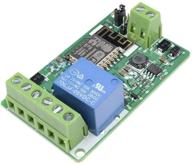

8 Review

How to Choose the Right Network Transceiver Model For Your Needs
Selecting the optimal network transceiver requires evaluating your infrastructure, applications, and performance goals. Follow these steps to determine the right transceiver model for your needs.
Step 1: Determine Required Speed and Port Type
Consider the speed that must be supported such as:
- 1GbE
- 10GbE
- 25GbE
- 40GbE
- 100GbE
Higher speeds allow more bandwidth but often at a cost premium. The transceiver port type must match the network ports, e.g. SFP, SFP+, QSFP, QSFP28, etc.
Step 2: Establish Required Media and Distance
Determine whether fiber or copper cabling will be used and the necessary distance. Fiber offers greater reach while copper is limited but inexpensive. Verify transceivers support required media types and distances.
Step 3: Evaluate Advanced Features
Consider if you need advanced capabilities:
- Digital diagnostic monitoring for real-time monitoring
- Forward error correction to recover from signal errors
- Wavelength tuning for flexibly using one transceiver across ranges
Step 4: Confirm Switch/Router Compatibility
Transceivers must be compatible with networking platforms. Using the original manufacturer’s transceivers prevents issues.
For example, Juniper’s QFX transceivers work seamlessly with their QFX switches. Third-party transceivers may require verification steps.
Step 5: Evaluate Power and Cooling Needs
Higher speed transceivers require more power and efficient cooling. 100G transceivers can consume over 3W per port. Assess infrastructure power budgets when upgrading.
Step 6: Compare Cost of Options
Higher performance transceivers often have a cost premium. Compare original manufacturer vs third-party transceiver costs to balance reliability and budget needs.
For example, a Juniper 40G QSFP+ transceiver retails for $1200 but third-party versions are under $200.
Step 7: Assess Future Scalability
Consider growth trajectories when selecting transceivers. Opting for higher speed transceivers or richer feature sets can facilitate future expansion.
By evaluating these key factors - speed, reach, features, compatibility, power, cost, and scalability needs - you can select the ideal transceiver model for your network requirements.
How to use your Amazon Prime to buy Network Transceivers
Amazon Prime provides fast, free shipping and other benefits that can help you easily purchase network transceivers. Here's how to leverage Amazon Prime for transceiver shopping.
Search for Compatible Transceivers
Use the Amazon search bar to find network transceivers that match your connectivity requirements. Search for the transceiver type (e.g. "10G SFP+"), port compatibility (e.g. "Cisco SFP+"), speed, distance, brand, etc. Amazon stocks a wide range of transceivers from top brands.
Check Specifications
Carefully read the product specifications listed to confirm the transceiver meets your needs in terms of speed, distance, cabling type, power draw, and features like digital diagnostic monitoring. Match the part number to your network equipment for guaranteed compatibility.
Compare Options
Amazon displays comparable transceiver models side-by-side for easy comparison. Sort and filter search results by speed, brand, price, customer ratings, etc. to find products that fit both performance and budget needs.
Find Special Deals and Savings
Look for coupon codes and special deals exclusive for Prime members that can help you save on transceivers. Lightning deals offer limited-time discounts. Subscribe and save options can provide recurring savings on frequently purchased items.
Check Reviews
Read detailed customer reviews to learn real-world feedback on a transceiver model's compatibility, performance, reliability, and ease of use. Reviews can uncover potential issues to help you select proven options.
Enjoy Fast, Free Shipping
One major perk of Prime is fast, often free shipping on your transceiver orders. This enables rapid network upgrades and replacements when needed. Check delivery speed options at checkout.
By using your Amazon Prime account, you can easily find and purchase reliable network transceivers with the connectivity specifications you require at competitive prices with the convenience of quick delivery.
What Are The Different Types Of Network Transceivers Available In The Market??
There are various types of network transceivers available in the market. Here are some of the types of network transceivers that can be found:
What Are The Differences Between SFP And SFP+ Transceivers??
The main differences between SFP and SFP+ transceivers are:
What Are The Advantages Of Using SFP+ Transceivers Over SFP Transceivers??
The advantages of using SFP+ transceivers over SFP transceivers are:






